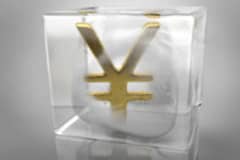Trading the Euro's Surge
A currency trade on the euro as it nears an eight-month high, with Andrew Busch, BMO Capital Markets
Currencies held to tight ranges in thin pre-holiday trade Thursday, with the euro see-sawing against the U.S. dollar while investors struggle to gauge developments on U.S. budget talks against a backdrop of generally positive U.S. economic growth data.
Concerns about U.S. policymakers not being able to reach a resolution on the so-called "fiscal cliff" of government spending cuts and tax rises in January dogged the currency market.
President Barack Obama has said he is near the limit on what he can offer to resolve the disagreement while the leader of the opposition, Republican John Boehner, said he will continue to work on a plan.
Talks soured earlier this week after progress was made on taxing and spending cuts. The combination could push the world's largest economy into recession.
"I think the market is having trouble trading the fiscal cliff given the mixture of headlines and uncertainty over any plan," said Win Thin, a currency strategist at Brown Brothers Harriman in New York. "You would think this is dollar positive. Euro still holding up above $1.32, and looks more like a technical bounce."
A U.S. budget agreement is deemed positive for growth-linked currencies such as the euro and Australian dollar, but viewed as negative for the safe-haven dollar. The Republicans announced plans to put an alternative tax plan to a vote in the House of Representatives this week, prompting Democrat Obama to threaten to veto it, thereby unraveling the progress made over the last week.
In late New York trade, the euro recouped midday losses to gain 0.13 percent, trading at $ 1.3243.
On Wednesday, the euro hit an 8 1/2 month high of $1.3308.
Still, market players were mostly positioned for a U.S. deal to be reached on time, with some expecting the euro to go as high as $1.3500 by early January. In recent sessions, signs of progress between Democratic and Republican lawmakers pushed global stocks to a three-month peak and saw riskier currencies all post solid gains against the U.S. dollar.
The euro had been as high as $1.3295, earlier on Thursday. Investors responded to better-than-expected U.S. third-quarter GDP data and it held gains after the release of more robust economic numbers.

Laara Cerman/Leigh Righton | Photolibrary | Getty Images
Investors had bought more euros ? a currency that tends to benefit in times of increased risk appetite ? as recovery in the world's largest economy seemed to be on track.
The final estimate for U.S. gross domestic growth in the third quarter was 3.1 percent, up from the 2.7 percent annual rate reported last month, while U.S. existing-home sales rose unexpectedly at their fastest pace in three years.
In addition, factory activity in the U.S. mid-Atlantic region accelerated in December, bouncing back from the previous month's storm-related slump as new orders picked up.
The euro edged up 0.12 percent to 111.76 yen. The Japanese currency had earlier slipped against the dollar after the scale of asset purchases set by the Bank of Japan disappointed some investors who had positioned for more aggressive easing.
The dollar slipped 0.01 percent to 84.39 yen. Any gain in the yen is expected to be capped by the prospect of further easing by the BoJ next year. The Japanese central bank increased its asset buying by 10 trillion yen and said it would debate next month whether there is room to raise its inflation target, a move that could weaken the currency.
Currencies held to tight ranges in thin pre-holiday trade Thursday, with the euro see-sawing against the U.S. dollar while investors struggle to gauge developments on U.S. budget talks against a backdrop of generally positive U.S. economic growth data.
Source: http://www.cnbc.com/id/100329351
Jon Lord weather.com Colorado shootings dark knight rises Aurora shooting James Eagan Holmes jeremy lin
No comments:
Post a Comment